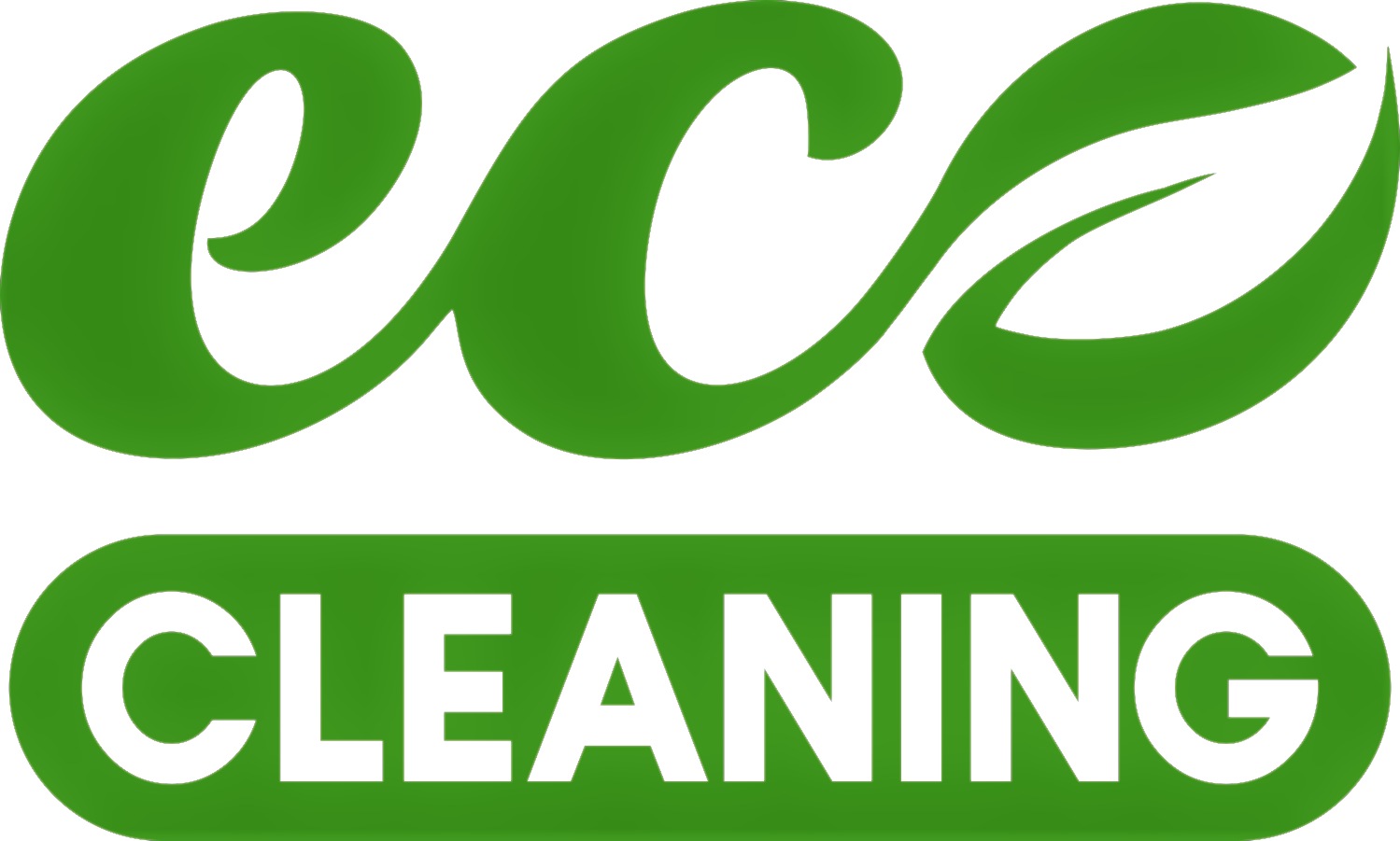Bacteria at home
According to the Society for General Microbiology, some bacteria can divide every 20 minutes with the right temperature and nutrients. That’s why symptoms of illnesses show up so quickly after an infection. One study about the most contaminated objects in the home found over 340 different bacteria on 30 different objects.
The household germs that can make you sick are:
- Staphylococcus aureus, or staph
- Yeast and mold
- Salmonella
- Escherichia coli, or E. coli
- Fecal matter
But not all bacteria are harmful. Your body contains plenty of bacteria that doesn’t make you sick.
The kitchen

The National Sanitation Foundation (NSF) found that areas where food is stored or prepared had more bacteria and fecal contamination than other places in the home. More than 75 percent of dish sponges and rags had Salmonella, E. coli, and fecal matter compared to the 9 percent on bathroom faucet handles.
The other kitchen items that need frequent cleaning are:
- cutting boards
- coffee maker
- refrigerator, especially areas in contact with uncooked and unwashed food
- kitchen sink and countertops
Here are some tips for keeping these spots clean:
- Use disinfectant wipes on the faucet, refrigerator surfaces, and countertop.
- Heat damp sponges in the microwave for a minute to kill bacteria.
- Change dish towels a few times a week.
- Wash your hands before and after touching or handling food.
Knobs, handles, and switches
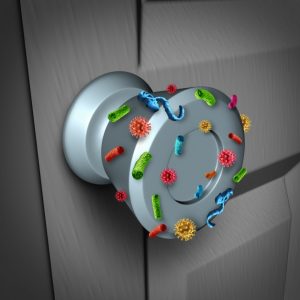 Countertops, handles, and light switches are a few less-than-obvious places for germs. While many people assume that the bathroom doorknob would be the dirtiest, the NSF found other spots that ranked higher with bacteria. These include:
Countertops, handles, and light switches are a few less-than-obvious places for germs. While many people assume that the bathroom doorknob would be the dirtiest, the NSF found other spots that ranked higher with bacteria. These include:
- bathroom light switches
- refrigerator handles
- stove knobs
- microwave handles
You can clean these spots once a week with disinfecting wipes. It’s ideal to use a new wipe for every spot instead of reusing the same one.
Makeup bag
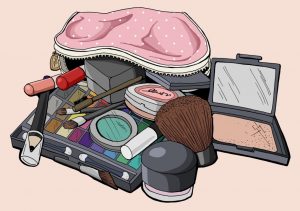
The nooks, crannies, and bristles of makeup applicators are prime real estate for germs, especially if you carry your makeup bag outside the house. Germs that live on your makeup applicators can cause skin and eye infections.
You may need to change how you store your makeup. Products should ideally be kept in a clean, dry space at room temperature. To keep makeup brushes clean, you can wash them once a week with regular soap and water.
Many doctors recommend replacing cosmetics every six months and throwing out eye makeup if you’ve had an eye infection.
Bathroom
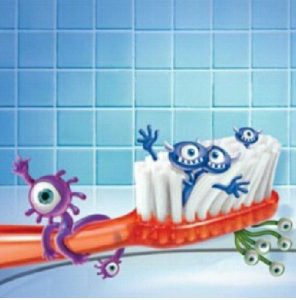 It’s no surprise that the place you scrub dirt and grim off your body holds bacteria. Due to the moisture from a hot shower, the bathroom is also a perfect place for germ growth. Spots you should pay special attention to include:
It’s no surprise that the place you scrub dirt and grim off your body holds bacteria. Due to the moisture from a hot shower, the bathroom is also a perfect place for germ growth. Spots you should pay special attention to include:
- the shower tub
- drains
- faucets
- floor area around the toilet
- bath towels
- toothbrushes
You can wipe surfaces and handles down with disinfectant on a daily basis and do a thorough cleaning once a week. An old toothbrush may come in handy for cleaning small spaces like around drains and faucets. You should also replace bathroom towels once a week and toothbrushes every three to four months.
Laundry
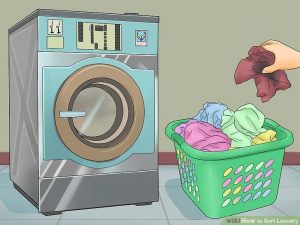
Wet laundry left in a machine, even for a short amount of time, can cause germs to flourish. You should transfer clean clothes to the dryer immediately after each wash. If clothes sit in the washer for more than 30 minutes, you may want to run a second cycle.If using a laundry mat or a shared laundry facility, clean the washer drum with a disinfecting wipe. Be sure to wipe down any surfaces, especially public ones, before folding clean clothes.
Home office and living room
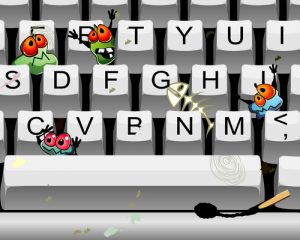
Remote controls, computer keyboards, phones, and tablets are often shared by multiple family members and guests. In 22 households, the NSF found yeast and mold on the computer keyboard, remote control, and video game controller as well as staph on the last two items.
Surfaces also contribute to bacteria growth and diversity. For example, a carpet can hold up to eight times its weight in dirt and dust and may be dirtier than a city street, according to Chem-Dry.
You can also use disinfectant wipes to clean your items, especially if they’ve come in contact with dirty surfaces.
Personal items
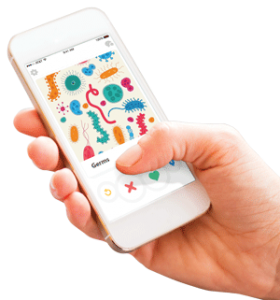
You can bring in germs from the outside to your house each day through your shoes, gym bag, and even headphones. Of the 22 homes surveyed, the NSF found fecal contamination, yeast, and mold present on:
- cell phones
- keys
- wallet and money
- lunch boxes
- the bottom of purses
Most disinfecting wipes are safe for electronics, but if you want to be extra safe, you can find electronic-specific cleaning supplies at stores.
Practicing good habits
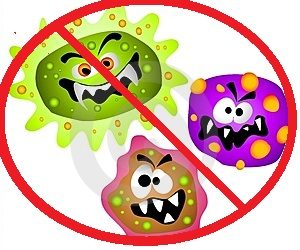 One way of minimizing germs from spreading is keeping things clean. You can do this with common household items like:
One way of minimizing germs from spreading is keeping things clean. You can do this with common household items like:
- soap and water
- disinfecting wipes
- hand sanitizers
Good habits like taking your shoes off before walking through the house and washing your hands after using the bathroom or touching raw food can also help. Experts at the Centers for Disease Control and Prevention recommend regular handwashing with soap and water for 20 to 30 seconds to remove germs and avoid illnesses.
